Autism and Sound Sensitivity
Understanding the Nuances of Sensory Processing in Autism

Introduction to Sound Sensitivity in Autism
Autism spectrum disorder (ASD) encompasses a wide range of sensory processing differences, with sound sensitivity—also known as hyperacusis—being one of the most common and impactful issues faced by autistic individuals. It affects a significant portion of this population, altering daily experiences and interactions. This article explores the complex relationship between autism and sound sensitivity, including causes, symptoms, prevalence, and management strategies.
Link Between Autism and Sound Sensitivity
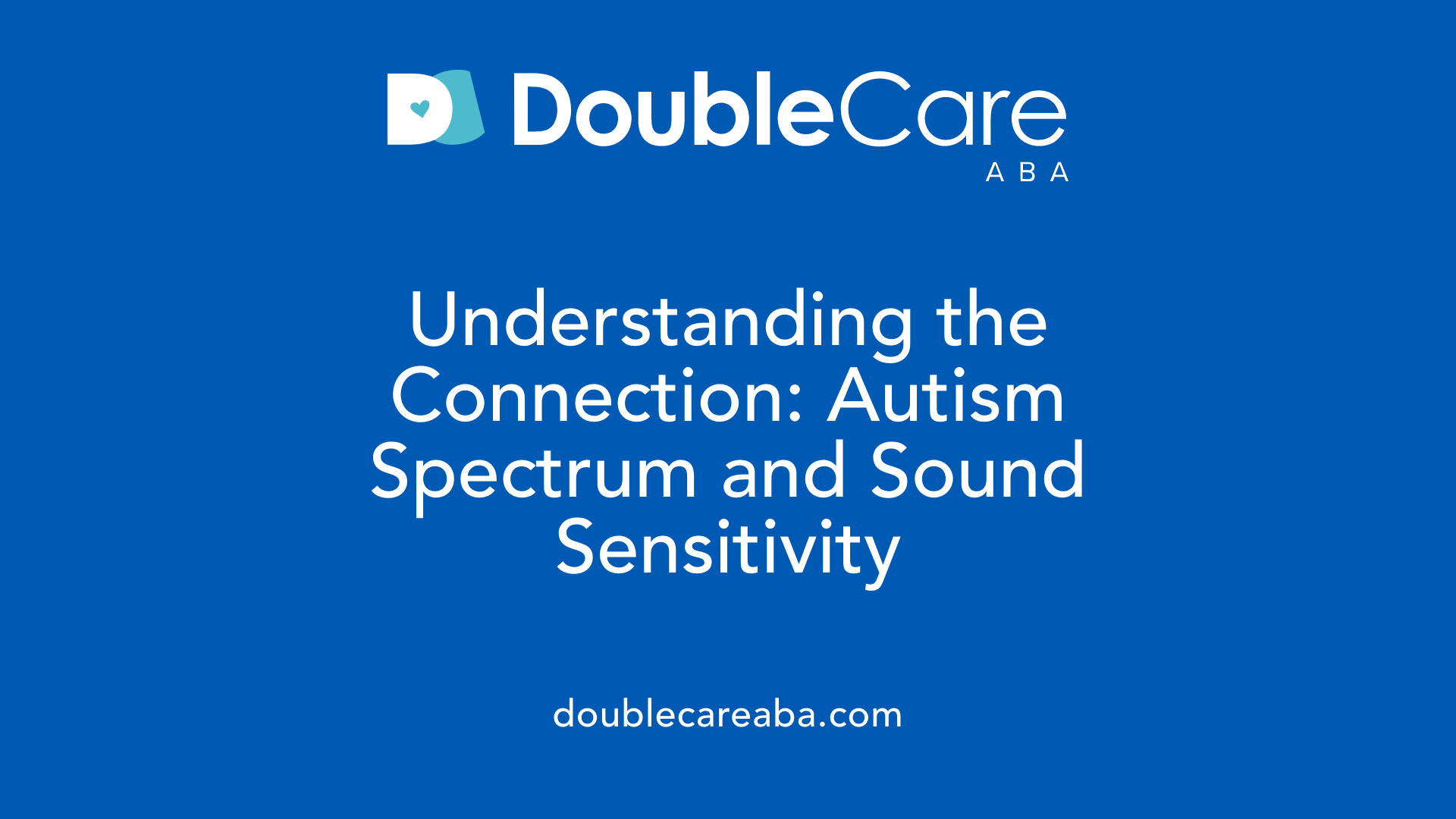
What is the link between autism and sound sensitivity?
Autism Spectrum Disorder (ASD) is closely associated with sensory processing differences, especially in how sounds are perceived and interpreted. Many autistic individuals experience heightened responsiveness to auditory stimuli, a condition often referred to as hyperacusis. This heightened sensitivity can lead to discomfort, distress, or even anxiety when exposed to everyday noises.
Neurological factors play a significant role in this connection. Brain imaging studies have revealed that children with autism show increased activity in regions involved in sensory processing, such as the auditory cortex, and areas tied to emotional responses like the amygdala. These neural differences can cause sounds to seem painfully loud or overwhelming. Additionally, research suggests an increased 'central gain' in auditory pathways, meaning the brain amplifies sound signals more than typical, resulting in exaggerated reactions.
This hypersensitivity may also involve atypical connectivity within the brain and abnormalities in inhibitory neural pathways that normally regulate sensory input. As a result, some individuals have difficulty habituating to persistent sounds or filtering out irrelevant noises, contributing to sensory overload.
Autistic responses to sound are not limited to hyperresponsiveness. Some may also exhibit hyposensitivity, seeking out loud or intense stimuli, which reflects diverse sensory processing patterns within the spectrum. This individual variability influences how each person experiences sound and reacts in different environments.
Managing this sensitivity involves strategies such as using ear protection like noise-canceling headphones, creating quiet spaces, and avoiding excessively noisy environments. These approaches aim to reduce distress and improve participation in social, educational, and community activities.
Understanding the neurological basis of sound sensitivity in autism helps inform better support strategies and highlights the importance of personalized interventions to enhance individuals’ well-being and engagement.
Symptoms and Manifestations of Sound Sensitivities
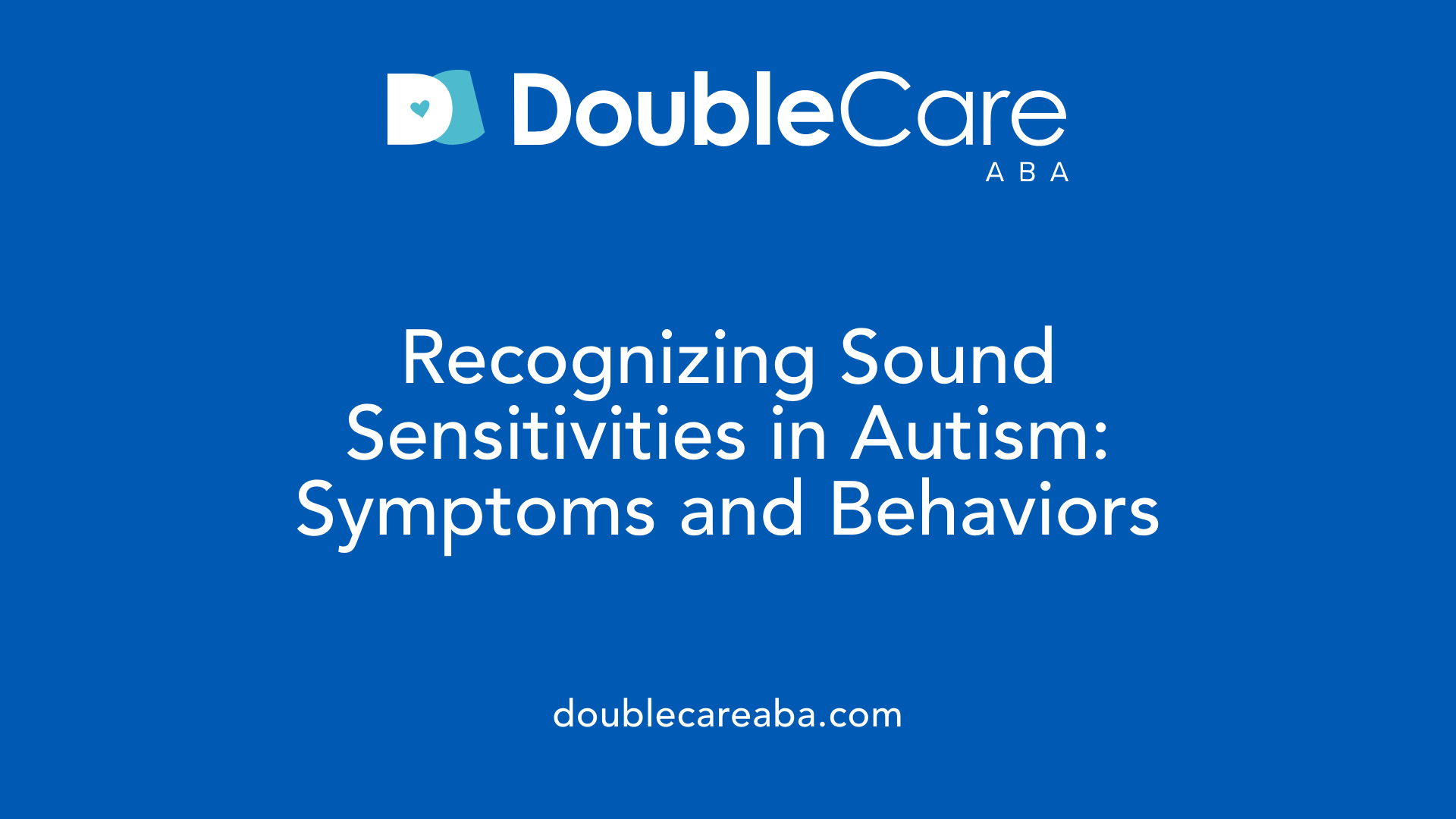
What are the common symptoms and manifestations of sound sensitivities in autism?
Children with autism frequently show a range of reactions to auditory stimuli, with some experiencing discomfort or even pain in response to certain sounds. These symptoms often manifest as behaviors like covering their ears, trying to block out noises, or leaving noisy environments altogether. Many autistic individuals suffer from hyperacusis, a heightened sensitivity to loud or certain sounds that can easily lead to sensory overload, causing anxiety, emotional distress, or meltdowns.
In contrast, some children exhibit hyposensitivity, seeking out loud or noisy stimuli to satisfy their sensory needs. This duality reflects the complex ways in which children with autism process sensory information. For example, heightened autonomic nervous system reactions to noise have been observed, which can trigger intense behavioral responses.
Brain imaging studies support these observations by showing increased activity in areas involved in sensory processing and emotional regulation when exposed to sounds. Consequently, reactions to auditory input can be unpredictable and vary greatly among individuals. Some may ignore certain sounds due to attention difficulties rather than hearing loss. Others might be easily startled or agitated by even minor noises.
In daily life, these sensitivities significantly impact children’s routines and social interactions. Common manifestations include seeking quiet spaces, becoming distressed in busy environments, or demonstrating behaviors like covering ears, vocal protests, or withdrawal. Understanding these symptoms is critical for developing effective strategies to support children with autism in managing their sensory experiences.
How do behavioral responses to sounds vary among autistic children?
Behavioral responses to sound sensitivities are diverse. Some children react with overt distress, such as crying, screaming, or trying to escape noisy settings. Others may exhibit more subtle behaviors like covering their ears, fidgeting, or becoming visibly agitated. In some cases, autistic children may act out or become hyperactive in response to overwhelming noises.
Interestingly, behavioral tests sometimes suggest that children appear not to respond to certain sounds. This phenomenon often results from attention issues rather than actual hearing deficits, meaning they might seem unaware of sounds that they find distressing or disruptive. Nonetheless, these responses underscore the importance of tailored interventions to help children cope.
Signals of strong reactions include trying to stop a sound, attempting to block it out, or leaving the environment altogether. Emotional reactions such as frustration or anxiety are common, and in severe cases, sensory overload can lead to meltdowns, where the child cannot communicate or regulate their emotions effectively.
How does sound sensitivity affect daily functioning?
The impact of sound sensitivities on daily life is profound. Many children with autism struggle to participate in typical routines due to their inability to handle noisy or unpredictable environments. For example, crowded places, schools, or community activities may become overwhelming, causing fatigue, stress, or withdrawal.
Sensory overload can interfere with attention, learning, and social interactions, limiting opportunities and creating emotional exhaustion. These challenges may lead to avoidance behaviors, such as refusing to attend certain places or activities, or behaviors associated with distress, like tantrums or shutdowns.
To mitigate these effects, accommodations like creating quiet zones, using noise-canceling headphones, or adjusting environments to reduce auditory stimuli are helpful. Therapeutic approaches, including occupational therapy and cognitive-behavioral strategies, aim to improve tolerance and coping skills.
Overall, recognizing and addressing sound sensitivities are vital for supporting the well-being, participation, and development of children on the autism spectrum. Tailored interventions and environmental modifications can significantly improve their daily experiences and emotional health.
Causes and Neurobiological Basis
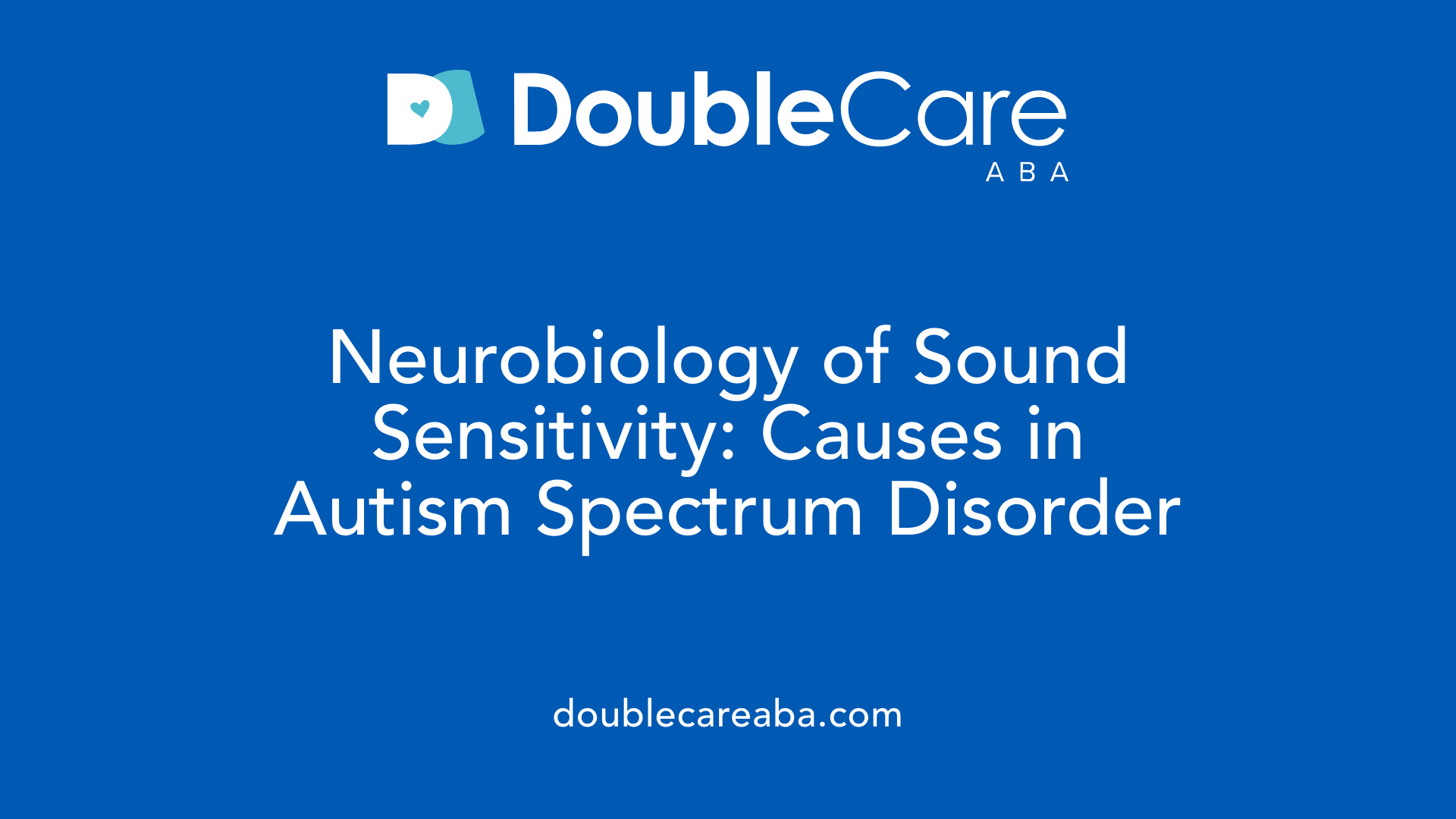
What causes sound sensitivities in autism?
Sound sensitivities in autism stem from complex neurobiological differences that affect how the brain processes sensory information, especially auditory stimuli. Research indicates that autistic individuals often exhibit atypical neural connectivity in regions involved in sensory integration and processing.
One prominent feature is the increased activity of central auditory pathways, sometimes described as enhanced central gain, which amplifies responses to sounds. This neural hyper-responsiveness can cause sounds to be perceived as excessively loud or painful—a condition known as hyperacusis. Such increased neural activity has been linked to abnormalities in brainstem structures and the auditory cortex, possibly resulting from excitatory/inhibitory imbalances.
Furthermore, atypical connectivity between different brain regions—such as hypoplasia (underdevelopment) of the cerebellum and brainstem—may compromise normal sensory modulation. These anatomical anomalies have been observed in neuroimaging studies involving children with autism.
Beyond structural differences, functional differences in brain circuits responsible for emotional regulation and salience attribution contribute to sound sensitivities. For instance, hyperactivation of the salience network—including areas like the anterior insular cortex—can cause certain sounds to be perceived as overwhelmingly significant or threatening, triggering strong emotional and physical reactions.
Genetic factors also play a significant role. Mutations in genes such as CNTN5 and CNTN6, which are involved in neuronal development and synaptic connectivity, have been associated with increased sensory sensitivities. These genetic variations can influence the wiring of neural circuits, making some individuals more prone to sensory overload.
In addition to neural connectivity, physiological mechanisms further contribute. Differences in the efferent (outgoing) auditory pathways and inhibitory interneurons may impair the brain's ability to filter irrelevant or background sounds, leading to heightened sensitivity.
The neurocognitive model suggests that abnormal processing at both low-level auditory stages and higher-order cognitive levels underpins the strong responses seen in hyperacusis, misophonia, and phonophobia (fear of sounds). For example, elevated activity in the amygdala, a key area involved in fear learning, can support persistent fear responses to specific auditory stimuli.
Effective management and intervention rely on understanding these neurobiological mechanisms. Current research continues to explore how abnormalities in brain structure, connectivity, and function contribute to sound sensitivities, guiding the development of targeted therapies.
Prevalence and Research Findings
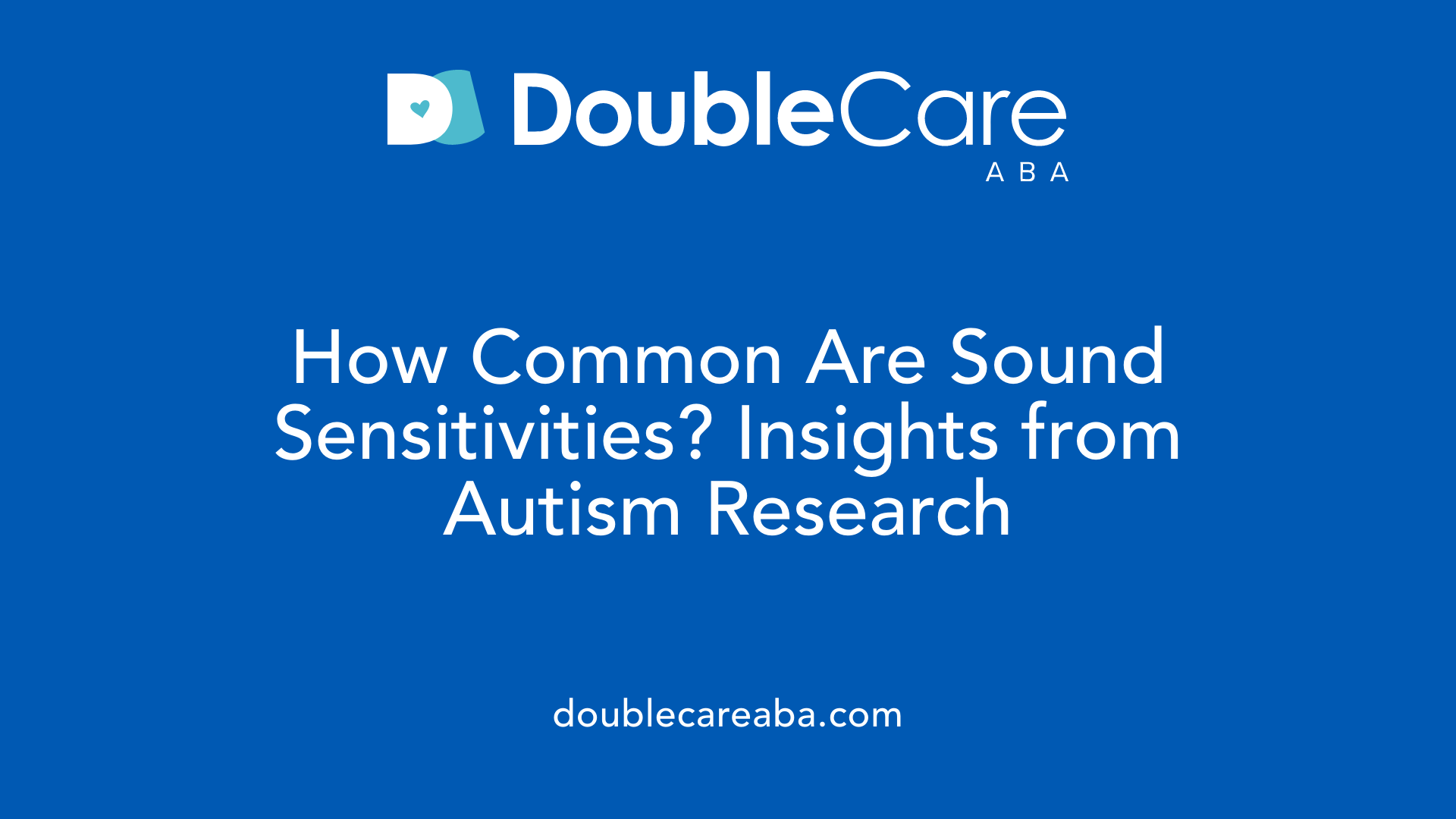
How prevalent are sound sensitivities among autistic individuals?
Research indicates that sound sensitivities are widespread among those on the autism spectrum. Studies show that a substantial portion of autistic individuals experience decreased sound tolerance, often called hyperacusis. In fact, assessments reveal that between approximately 77.6% and 86.6% of autistic people experience discomfort or distress due to sounds at some point in their lives.
Nearly 90% of people with autism may have some form of sensory hypersensitivity, including to sounds. This heightened sensitivity can manifest as feelings of discomfort, anxiety, or even physical pain, leading to behaviors such as covering ears, trying to stop the noise, or leaving noisy environments.
The variability in the exact prevalence rates is influenced by different factors, including the assessment methods used—such as case history, audiometry measurements, and questionnaires—and individual differences among people with autism. Despite these differences, it is clear that sound sensitivities are among the most common sensory challenges faced by autistic individuals.
These sensitivities often affect daily routines and interactions, making simple activities like attending school or community events stressful or overwhelming. They can also contribute to behavioral reactions such as meltdowns or withdrawal, further impacting social participation and learning.
Understanding how prevalent these sensitivities are underscores the importance of tailored support strategies. Providing accommodations such as quiet spaces, noise-canceling devices, and gradual desensitization can significantly improve quality of life for autistic individuals dealing with sound sensitivities.
Overall, recognizing the high frequency of auditory sensitivities emphasizes the need for ongoing research and implementation of effective interventions to manage these challenges. Building awareness among caregivers, educators, and healthcare professionals is vital to ensure that sensory needs are met, fostering environments that are safer and more comfortable for autistic people.
Management Strategies and Therapies
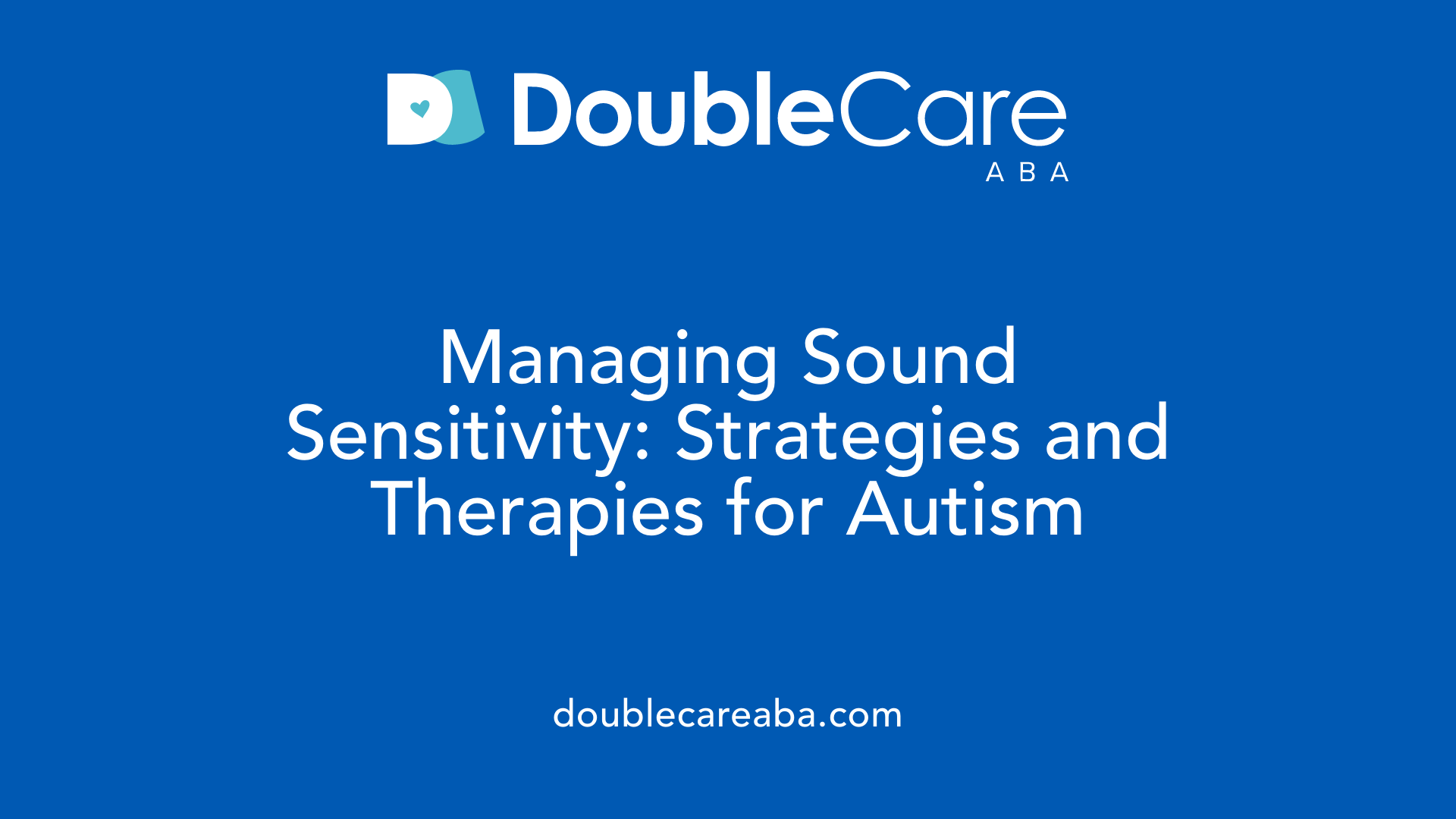
What management strategies or therapies are effective for addressing sound sensitivities in autism?
Children on the autism spectrum often experience heightened sensitivities to auditory stimuli, which can lead to significant distress and interfere with daily activities. Fortunately, various strategies and therapies are available to help manage these sensitivities.
One of the most practical approaches involves environmental modifications. For example, using noise-canceling headphones or ear defenders can help reduce overwhelming sounds, making environments more manageable for autistic children. Creating sensory-friendly spaces—such as quiet corners or rooms with reduced noise levels—provides a refuge where children can retreat when overwhelmed. Adjusting routines to include periods of calm and controlling environmental noise also assist in limiting exposure to potential triggers.
Therapeutic interventions play a crucial role in supporting children with sound sensitivities. Occupational therapy, specifically sensory integration therapy, aims to help children process sensory information more effectively. Through tailored activities, children can slowly habituate to certain sounds, decreasing their over-responsiveness over time.
Auditory integration therapy (AIT) and similar approaches have been used with the goal of reducing hypersensitivity; however, scientific evidence regarding their efficacy remains limited and mixed. These therapies typically involve controlled exposure to sounds in a structured setting, but researchers recommend caution and emphasize the importance of professional guidance.
Cognitive-behavioral therapy (CBT) is another valuable tool, especially for addressing the anxiety or fear associated with uncomfortable sounds. CBT helps children develop coping skills, modify negative thoughts related to noise, and learn adaptive responses, thereby reducing the emotional impact of sound sensitivities.
In addition to direct therapies, routine adjustments can improve comfort levels. Incorporating regular periods of quiet and allowing children some control over their environment—such as choosing when to wear headphones or to engage in quiet activities—can promote a sense of safety and predictability.
While these strategies can be effective, it is important to remember that each child is unique. Working closely with professionals—including audiologists, occupational therapists, and behavioral specialists—ensures that interventions are tailored to individual needs and sensitivities.
| Strategy | Description | Additional Notes |
|---|---|---|
| Environmental modifications | Using noise-canceling devices and creating quiet spaces | Helps reduce immediate overstimulation |
| Sensory integration therapy | Tailored activities to desensitize and improve processing | Often includes gradual exposure |
| Auditory integration therapy | Structured sound exposure (evidence limited) | Requires professional supervision |
| Cognitive-behavioral therapy | Teaching coping mechanisms and anxiety reduction | Effective for managing emotional reactions |
| Routine adjustment | Incorporating quiet times and environmental control | Enhances predictability and safety |
Overall, combining environmental adjustments with therapeutic interventions offers the best chance for improving tolerance to sounds and reducing associated distress. Ongoing assessment and collaboration with healthcare providers will ensure that strategies remain effective and responsive to each child's evolving needs.
Distinguishing Related Conditions
What are the differences between hyperacusis, misophonia, and phonophobia in individuals with autism?
Individuals with autism often experience distinct auditory sensitivities that can be categorized into hyperacusis, misophonia, and phonophobia. While these conditions sometimes overlap, each has unique characteristics and implications.
Hyperacusis involves an increased perception of loudness, where sounds that are typically tolerable are perceived as painfully or overwhelming loud. This heightened sensory sensitivity is often linked to differences in the neural processing of sound, associated with an enhanced central gain in auditory pathways or abnormalities in brain structures such as the brainstem and auditory cortex. Children with hyperacusis may cover their ears, become distressed in noisy environments, or avoid certain loud settings.
Misophonia is characterized by emotional and physiological reactions—like anger, disgust, or anxiety—triggered by specific sounds, such as chewing, clicking pens, or tapping. These responses are highly context-dependent and often linked to the salience of the sound. In some cases, when sounds are self-produced, reactions can diminish, indicating an emotional or cognitive component beyond mere sensory overload.
Phonophobia differs from the above in that it involves a fear or anxiety response to particular sounds or situations, rather than just sensitivity or emotional reactions. Individuals might avoid places or activities where certain sounds are present due to the anticipation of discomfort or fear of a negative outcome. This condition is often related to conditioned fear responses involving brain circuits such as the amygdala and prefrontal cortex.
| Condition | Primary Feature | Typical Response | Underlying Cause | Treatment Approaches |
|---|---|---|---|---|
| Hyperacusis | Increased loudness perception, intolerance to sounds | Covering ears, withdrawal, distress | Neural gain, brainstem/hypothalamic differences | Desensitization, habituation training, CBT if anxiety is involved |
| Misophonia | Strong emotional reactions to specific sounds | Irritation, anger, attempts to escape or stop sounds | Salience attribution, hyperactivation of salience network | Behavioral therapy, sound masking, environmental modifications |
| Phonophobia | Fear or anxiety related to certain sounds | Avoidance, anxiety episodes | Fear learning, abnormal fear circuit functioning | Exposure therapy, cognitive behavioral therapy |
Understanding these differences is crucial for tailoring support strategies. For example, managing hyperacusis might involve reducing environmental noise and using ear protection. Conversely, addressing misophonia could include cognitive-behavioral approaches to reduce emotional reactions, while phonophobia may require anxiety management techniques and gradual exposure.
Despite their differences, these conditions frequently co-occur in individuals with autism, complicating diagnosis and treatment. They are believed to involve alterations in both low-level sensory processing and higher cognitive functions, emphasizing the necessity for multidisciplinary management.
Current research continues to explore the neural mechanisms underlying these conditions. Findings suggest abnormal connectivity in sensory, limbic, and salience networks, and potential genetic influences involving genes like CNTN5 and CNTN6, which relate to neuronal development. Because of the complexity and individual variability, personalized approaches remain essential.
In summary, hyperacusis, misophonia, and phonophobia each reflect different facets of auditory processing differences in autism—sensory hypersensitivity, emotional salience, and fear conditioning. Recognizing these distinctions enables targeted interventions to improve quality of life and sensory comfort for affected individuals.
Impact on Daily Life and Well-being
How do sound sensitivities impact daily functioning and well-being of individuals with autism?
Sound sensitivities play a significant role in shaping the daily experiences of individuals on the autism spectrum. Many autistic individuals exhibit hyperreactivity to auditory stimuli, making seemingly ordinary sounds overwhelming or even painful. This heightened sensitivity can lead to sensory overload, which often manifests as physical discomfort, emotional distress, or behavioral outbursts like meltdowns.
In social settings, such sensitivities can hinder communication and participation. For example, loud noises at social gatherings or public places may cause individuals to withdraw, cover their ears, or attempt to leave the environment. These reactions can impede social interactions and diminish opportunities for engagement, learning, and relationship-building.
The impact extends beyond social interactions. Everyday routines, such as grocery shopping or attending school, become challenging due to unpredictable or noisy environments. The inability to filter out irrelevant background noise can impair concentration and focus, which affects academic performance and daily task completion.
Physically, sound sensitivities can trigger stress-related health issues, like migraines or fatigue. The persistent discomfort from noise exposure contributes to heightened anxiety levels, further impairing overall well-being. Vulnerable individuals might also respond with avoidance behaviors that limit their participation in community and recreational activities, potentially leading to social isolation.
To mitigate these effects, many caregivers and educators utilize practical strategies. These include creating sensory-friendly spaces with soundproofing, using noise-canceling headphones, and scheduling quieter times for activities. Professional therapies such as occupational therapy or cognitive behavioral therapy may also help individuals develop coping skills.
Overall, the difficulty in managing sound sensitivities underscores the importance of environment adaptation, understanding, and support. Ensuring that everyday surroundings accommodate sensory needs can greatly enhance quality of life. Such measures help reduce stress, facilitate social inclusion, and foster emotional resilience.
| Challenges in Daily Life | Examples | Impact |
|---|---|---|
| Social participation | Avoiding noisy environments | Isolation, reduced social skills |
| Focus and learning | Struggling in noisy classrooms | Impaired academic progress |
| Emotional well-being | Anxiety and meltdowns | Stress, fatigue |
| Physical health | Headaches, fatigue | Health complications |
| Routine activities | Shopping or traveling | Discomfort, avoidance behaviors |
Addressing sound sensitivities involves a combination of environmental modifications, assistive devices, and therapeutic interventions. These efforts aim to reduce sensory overload and support better integration into daily routines, ultimately promoting a better quality of life and mental health for individuals with autism.
Educational Resources and Practical Support
What educational resources and coping methods can support autistic individuals with sound sensitivities?
Supporting children and adults on the autism spectrum who experience sound sensitivities requires a combination of educational resources and practical strategies that address their unique sensory needs.
One fundamental approach is to create sensory-friendly environments. This might include designated quiet zones or calm spaces within schools and community centers where individuals can retreat to when they feel overwhelmed by noise. These spaces are usually equipped with soft lighting, comfortable seating, and minimal auditory stimuli, providing a safe haven for sensory regulation.
Assistive tools and devices are vital in managing sound sensitivities. Noise-canceling headphones, earplugs, and sound filters can significantly reduce exposure to overwhelming sounds. For example, research indicates that using noise-canceling headphones can enhance participation in social and educational activities, helping individuals focus and stay calm.
In addition to environmental modifications and tools, engaging in structured interventions can help reduce sensitivity over time. Gradual desensitization—slowly exposing individuals to sounds in controlled settings—can build tolerance. Therapies such as Tinnitus Retraining Therapy (TRT) or auditory integration training (AIT) are sometimes used, although scientific evidence for their effectiveness varies. Cognitive-behavioral therapy (CBT) also plays a role in teaching coping skills and addressing the anxiety that often accompanies sound sensitivities.
Professional support is crucial for developing personalized management plans. Audiologists can assess specific hearing-related issues and recommend appropriate devices, while occupational therapists specialize in sensory integration techniques tailored to the individual's needs. These professionals can guide families and educational staff on accommodations and strategies to support sensory regulation.
Practical strategies in daily routines include scheduling regular quiet breaks during activities, providing distraction tools like fidget toys or calming music, and adjusting room noise levels when possible. Teachers and caregivers can also inform and involve the individual in choosing preferred sounds or signaling when they need a sensory break.
Collectively, these resources and methods help reduce distress, improve participation, and foster a supportive environment that recognizes and respects sensory differences. Building a toolkit of accessible coping mechanisms—from environmental modifications to behavioral therapies—empowers autistic individuals to navigate their sensory world more comfortably.
Supporting Autistic Individuals with Sound Sensitivity
Understanding the neurological and behavioral complexities underlying sound sensitivities in autism is crucial for creating supportive environments and targeted interventions. Through a combination of environmental modifications, therapeutic strategies, and educational resources, caregivers and professionals can greatly improve the quality of life for autistic individuals. Continued research into the neural mechanisms and effective treatments remains vital, ensuring that tailored approaches evolve and meet the diverse needs of this population. Empowering individuals with tools and understanding not only reduces distress but also enhances participation, learning, and social engagement, fostering a more inclusive and supportive community.
References
- What Do We Know About Noise Sensitivity In Autism?
- Hyperacusis in Autism Spectrum Disorders - PMC
- Sensory issues
- Autism and Sound Sensitivity: Why it Happens and Coping ...
- A Review of Decreased Sound Tolerance in Autism
- Autism and Sound Sensitivity: Everything You Need to Know
- What Do We Know About Noise Sensitivity in Autism?
- Autism and Sound Sensitivity: Understanding Responses ...
- What Do We Know About Noise Sensitivity In Autism?
















